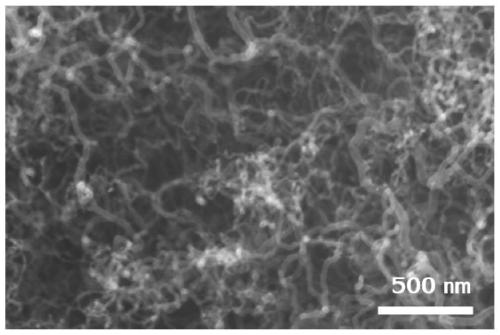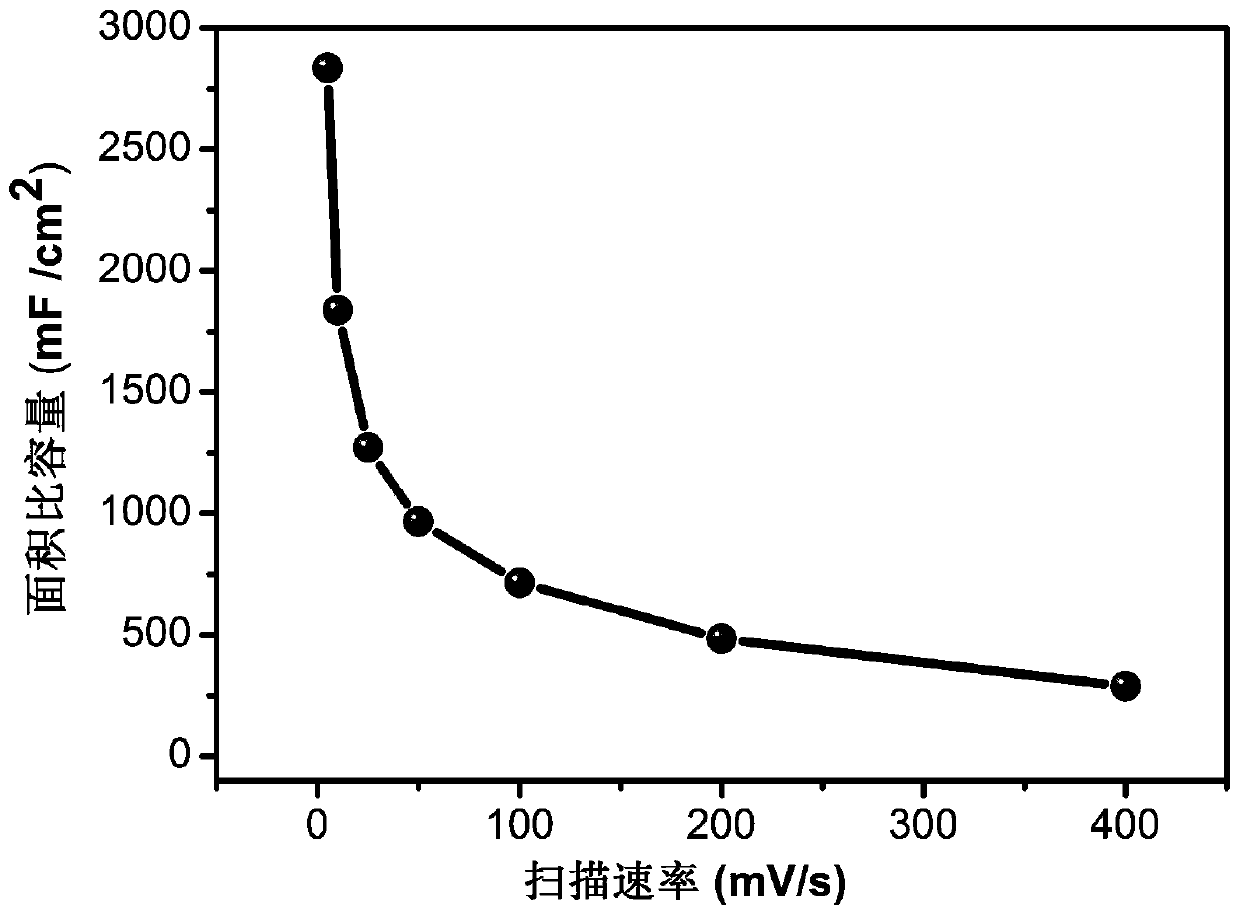Energy storage system of modified carbon-based electrode cooperating with redox electrolyte
A technology of synergistic oxidation and electrolyte, applied in the field of electrochemical energy storage, can solve the problems of non-commercial application and low specific capacity, and achieve the effect of low cost, high cost advantage and simple process
- Summary
- Abstract
- Description
- Claims
- Application Information
AI Technical Summary
Problems solved by technology
Method used
Image
Examples
Embodiment 1
[0031] The energy storage system with synergistic effect is constructed by electrochemical oxidation treatment of carbon nanotube electrodes and sodium sulfate aqueous solution containing potassium ferricyanide. The specific operation steps are as follows:
[0032] The carbon nanotube electrode was placed in a mixed solution (volume ratio 1:1) of concentrated sulfuric acid (98% by mass fraction) and concentrated nitric acid (68% by mass fraction) for full infiltration, and electrochemical oxidation was performed at a voltage of 3V. The processing time was 4 minutes. Electron microscope images of processed carbon nanotubes as figure 1 shown. Wash and dry the treated electrodes with clean water. Electrochemical test is carried out to electrode then, and electrolytic solution is the 1M sodium sulfate solution containing 0.06M potassium ferricyanide, and the voltage interval of cyclic voltammetry test is-0.1-0.8V, and scan rate is 5-200mV, and obtained result is as follows fig...
Embodiment 2
[0034] A synergistic energy storage system constructed by electrochemical oxidation treatment of carbon fiber electrodes and potassium nitrate aqueous solution containing hydroquinone.
[0035] The specific operation steps are as follows:
[0036] The carbon fiber electrode was placed in a mixed solution (volume ratio 1:2) of concentrated sulfuric acid (98% by mass fraction) and perchloric acid (70% by mass fraction) for full infiltration, and electrochemical oxidation was carried out at a voltage of 4V. The time is 15 minutes. Wash and dry the treated electrodes with clean water. Then the electrode is electrochemically tested, the electrolyte is 1M potassium nitrate solution containing 0.1M hydroquinone, the voltage range of the cyclic voltammetry test is 0-1V, and the scan rate is 5-200mV. According to the experimental results, the area specific capacity of the carbon fiber electrode at a scan rate of 5mV / s is as high as 1270mF / cm 2 .
Embodiment 3
[0038] An energy storage system with synergistic effect constructed by electrochemical oxidation treatment of activated carbon electrodes and sodium sulfate aqueous solution containing potassium p-ferricyanide. The specific operation steps are as follows:
[0039] The activated carbon electrode is placed in a mixed solution (volume ratio 2:1) of concentrated sulfuric acid (98% by mass fraction) and concentrated hydrochloric acid (36% by mass fraction) for full infiltration, and electrochemical oxidation is carried out at a voltage of 2V, and the treatment time is for 2 minutes. Wash and dry the treated electrodes with clean water. Then the electrode is electrochemically tested, the electrolyte is 0.5M sodium sulfate solution containing 0.05M potassium ferricyanide, the voltage range of the cyclic voltammetry test is -0.2-0.9V, and the scan rate is 5-200mV. According to the experimental results, the area specific capacity obtained by the activated carbon electrode at a scan r...
PUM
 Login to View More
Login to View More Abstract
Description
Claims
Application Information
 Login to View More
Login to View More - R&D
- Intellectual Property
- Life Sciences
- Materials
- Tech Scout
- Unparalleled Data Quality
- Higher Quality Content
- 60% Fewer Hallucinations
Browse by: Latest US Patents, China's latest patents, Technical Efficacy Thesaurus, Application Domain, Technology Topic, Popular Technical Reports.
© 2025 PatSnap. All rights reserved.Legal|Privacy policy|Modern Slavery Act Transparency Statement|Sitemap|About US| Contact US: help@patsnap.com



